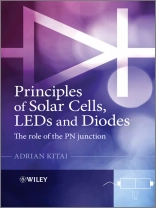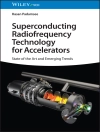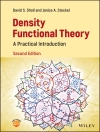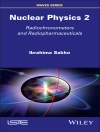This textbook introduces the physical concepts required
for a comprehensive understanding of p-n junction devices, light
emitting diodes and solar cells.
Semiconductor devices have made a major impact on the way we
work and live. Today semiconductor
p-n junction diode devices are experiencing substantial growth:
solar cells are used on an unprecedented scale in the renewable
energy industry; and light emitting diodes (LEDs) are
revolutionizing energy efficient lighting. These two emerging
industries based on p-n junctions make a significant contribution
to the reduction in fossil fuel consumption.
This book covers the two most important applications of
semiconductor diodes – solar cells and LEDs – together with
quantitative coverage of the physics of the p-n junction. The
reader will gain a thorough understanding of p-n junctions as the
text begins with semiconductor and junction device fundamentals and
extends to the practical implementation of semiconductors in both
photovoltaic and LED devices. Treatment of a range of
important semiconductor materials and device structures is also
presented in a readable manner.
Topics are divided into the following six chapters:
* Semiconductor Physics
* The PN Junction Diode
* Photon Emission and Absorption
* The Solar Cell
* Light Emitting Diodes
* Organic Semiconductors, OLEDs and Solar Cells
Containing student problems at the end of each chapter and
worked example problems throughout, this textbook is intended for
senior level undergraduate students doing courses in electrical
engineering, physics and materials science. Researchers working on
solar cells and LED devices, and those in the electronics industry
would also benefit from the background information the book
provides.
विषयसूची
Introduction xi
Acknowledgements xv
1 Semiconductor Physics 1
1.1 Introduction 2
1.2 The Band Theory of Solids 2
1.3 The Kronig-Penney Model 3
1.4 The Bragg Model 8
1.5 Effective Mass 8
1.6 Number of States in a Band 10
1.7 Band Filling 12
1.8 Fermi Energy and Holes 14
1.9 Carrier Concentration 15
1.10 Semiconductor Materials 25
1.11 Semiconductor Band Diagrams 26
1.12 Direct Gap and Indirect Gap Semiconductors 29
1.13 Extrinsic Semiconductors 35
1.14 Carrier Transport in Semiconductors 40
1.15 Equilibrium and Non-Equilibrium Dynamics 43
1.16 Carrier Diffusion and the Einstein Relation 45
1.17 Quasi-Fermi Energies 48
1.18 The Diffusion Equation 50
1.19 Traps and Carrier Lifetimes 53
1.20 Alloy Semiconductors 56
1.21 Summary 59
Suggestions for Further Reading 61
Problems 63
2 The PN Junction Diode 69
2.1 Introduction 70
2.2 Diode Current 72
2.3 Contact Potential 75
2.4 The Depletion Approximation 78
2.5 The Diode Equation 85
2.6 Reverse Breakdown and the Zener Diode 97
2.7 Tunnel Diodes 100
2.8 Generation/Recombination Currents 101
2.9 Ohmic Contacts, Schottky Barriers and Schottky Diodes 104
2.10 Heterojunctions 113
2.11 Alternating Current (AC) and Transient Behaviour 115
2.12 Summary 117
Suggestions for Further Reading 118
Problems 119
3 Photon Emission and Absorption 123
3.1 Introduction to Luminescence and Absorption 124
3.2 Physics of Light Emission 125
3.3 Simple Harmonic Radiator 128
3.4 Quantum Description 129
3.5 The Exciton 132
3.6 Two-Electron Atoms 135
3.7 Molecular Excitons 141
3.8 Band-to-Band Transitions 144
3.9 Photometric Units 148
3.10 Summary 152
Suggestions for Further Reading 153
Problems 155
4 The Solar Cell 159
4.1 Introduction 160
4.2 Light Absorption 162
4.3 Solar Radiation 164
4.4 Solar Cell Design and Analysis 164
4.5 Thin Solar Cells 172
4.6 Solar Cell Generation as a Function of Depth 176
4.7 Solar Cell Efficiency 179
4.8 Silicon Solar Cell Technology: Wafer Preparation 184
4.9 Silicon Solar Cell Technology: Solar Cell Finishing 187
4.10 Silicon Solar Cell Technology: Advanced Production Methods 191
4.11 Thin Film Solar Cells: Amorphous Silicon 192
4.12 Telluride/Selenide/Sulphide Thin-Film Solar Cells 199
4.13 High-Efficiency Multijunction Solar Cells 200
4.14 Concentrating Solar Systems 203
4.15 Summary 204
Suggestions for Further Reading 205
Problems 207
5 Light Emitting Diodes 215
5.1 Introduction 216
5.2 LED Operation and Device Structures 217
5.3 Emission Spectrum 220
5.4 Non-Radiative Recombination 221
5.5 Optical Outcoupling 223
5.6 Ga As LEDs 225
5.7 Ga As1-x Px LEDs 226
5.8 Double Heterojunction Alx Ga1-x As LEDs 228
5.9 Al Ga In P LEDs 234
5.10 Ga1-x Inx N LEDs 236
5.11 LED Structures for Enhanced Outcoupling and Power Output 244
5.12 Summary 247
Suggestions for Further Reading 248
Problems 249
6 Organic Semiconductors, OLEDs and Solar Cells 253
6.1 Introduction to Organic Electronics 254
6.2 Conjugated Systems 255
6.3 Polymer OLEDs 260
6.4 Small-Molecule OLEDs 266
6.5 Anode Materials 270
6.6 Cathode Materials 270
6.7 Hole Injection Layer 271
6.8 Electron Injection Layer 272
6.9 Hole Transport Layer 272
6.10 Electron Transport Layer 275
6.11 Light Emitting Material Processes 276
6.12 Host Materials 278
6.13 Fluorescent Dopants 279
6.14 Phosphorescent Dopants 283
6.15 Organic Solar Cells 283
6.16 Organic Solar Cell Materials 289
6.17 Summary 292
Suggestions for Further Reading 294
Problems 295
Appendix 1: Physical Constants 301
Appendix 2: Properties of Semiconductor Materials 303
Appendix 3: The Boltzmann Distribution Function 305
Index 309
लेखक के बारे में
ADRIAN KITAI, Departments of Engineering Physics and Materials Science and Engineering, Mc Master University, Hamilton, Ontario, Canada












